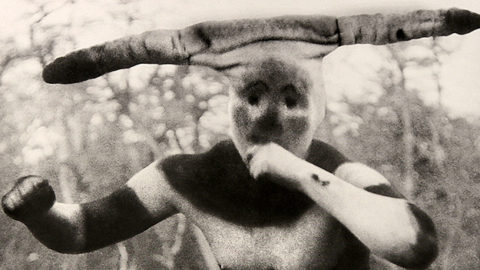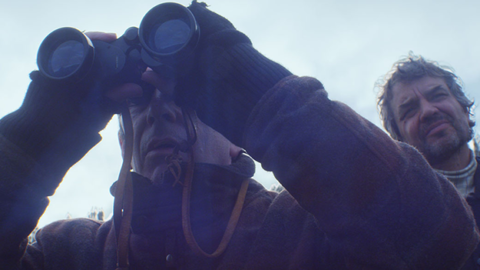Interview: Patricio Guzmán
Patricio Guzmán knows how to hold a gaze. Seated in the downstairs lobby of the Intercontinental Hotel in Toronto, with a steady stream of film professionals ascending an escalator from here to there, Guzmán listens and talks with an unwavering focus that’s respectful, flattering, and very intimidating. As his answers suggest, he’s not just registering every word, he’s also weighing them, and surmising what’s behind them.
Over nearly a half-century of filmmaking, Guzmán’s gaze has been equally inquisitive, demanding, intense. In Nostalgia for the Light (10) and The Pearl Button, which opens theatrically this week, the 74-year-old Chilean director exhibits a curiosity, and formal friskiness, that belies his elder master stature. While Nostalgia yoked together the cosmos and domestic politics, infinity and horrific recent history, contemplation and anger, The Pearl Button charts a winding course from a poetic-essayistic disquisition on the origins and power of water, to anthropological consideration of the ancient Patagonian cultures of southwestern Chile, to folklorist archival storytelling, to first-person oral history, then to a shockingly apt consideration of Pinochet’s genocidal policies, including an absolute gut-punch of a re-enactment sequence.
It’s simultaneously a return to preoccupations and a venture into the unknown—geographical and otherwise. During a brief window of time before the legendary filmmaker was scheduled to dine with friend and mutual fan Frederick Wiseman—a fellow wizard of subtle but sophisticated structures—Guzmán talked with FILM COMMENT about his formal strategies, the uses of metaphor, and the mutability of story.
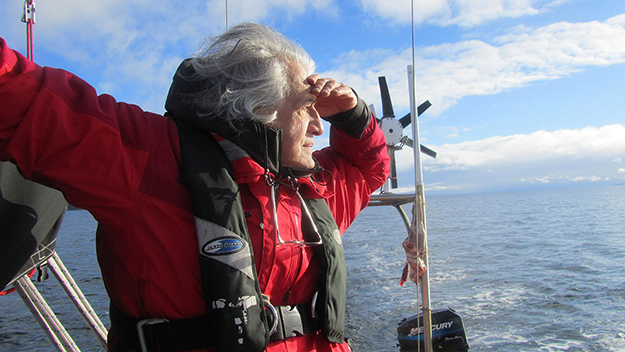
I’m very interested in what you do formally in The Pearl Button. You bring in all these elements—the ice world, the astrological element, the Patagonian natives, Pinochet’s murders—and as a viewer, one doesn’t necessarily know how it’s all going to fit together or how they all relate to one another. How did the film’s design come together, and how much did the design reflect your process of gathering and synthesizing information?
Why are you interested in this?
Because I’m interested in cinema.
And do you make film?
Not at the moment. These days I mostly write about the process.
Analysis.
Exactly.
What I tend to do is write a script—the sheets are like this [He holds up a sheet of paper vertically] but I put them like this [Tilts it horizontally]. So I write the text, describe the images, make some comments in very small print, and sometimes I make drawings. I think I have a movie but there’s nothing there yet, it’s just things that come to my mind. It gives you the impression that it’s something very organized, but the reality is that that script is never followed. It’s a way of setting my own mind at ease and being able to advance, to go forward.
My starting point was a trip to the locations and I didn’t go alone, I went with my assistant and a sound technician, and I also carried a small camera with me. So it was a bit of a research trip but also to film certain spaces. There were two points on these trips: Santiago and the South. We started in the South, renting a ship and going through the channels over 10 days.
Had you ever been through the channels?
Never. If this is Chile [points to a straw on the table], Chileans move within this area here [points to the center of the straw]. This is La Serena here and this is Puerto Montt. This top part, which is the desert—we don’t know it. And the bottom, the South—we don’t know it either. We just inhabit the center of Chile. So going to the South is like going to a different country altogether, and it’s fascinating. There are fjords, there are glaciers, coasts, forests, virgin coasts, rocks with no trees. The skies are like being in outer space. When the moon comes up, it just completely shocks you, it’s incredible. It’s an uninhabited place on earth, more than on the Argentine side. On the Chilean side you can’t really explore that area because there are all these little channels—it’s like the breaking-down of the continent. After I did that trip I understood a little bit more of what the movie was going to be about.
If you didn’t know what the movie was going to be about, what took you there?
Because I did know I wanted it to be about the ocean, and that’s the most unknown area. In that area where there are no people, there’s a city that’s quite important, called Punta Arenas. In Punta Arenas I found Jemmy Button’s story. Then I went back to Santiago and continued to interview people, and that’s where I found the professors: a history professor who told me everything he knew, and the poet Raúl Zurita, who’s such a magical kind of person, and then I went back to Paris. During a whole year I processed these elements, and little by little I came to build the story between the two buttons—the button that is found on the cadaver in the ocean and Jemmy Button’s button. With those two elements, the movie came together.
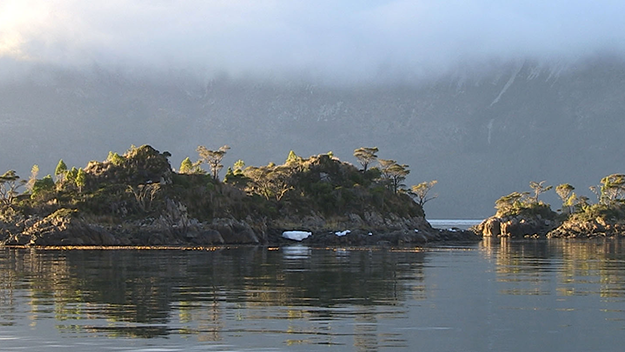
What I love is that your discovery of the Jemmy Button story is where your filmmaking begins, yet structurally it’s what the film builds toward. Piecing the film together in Paris, did you know you had to go backward? That you needed to bring us to an earlier place?
Yes, because I wanted to start with space, with water that arrived to earth—by comets, by meteorites. So we had to start with Antarctica, the most aquatic part of earth. Then, once water as an element is made a crucial part of the story, we can continue with the story itself. It’s all drama.
In both this film and Nostalgia for Light, you work so compellingly with metaphor, but instead of doing so imprecisely, to generalize or universalize, you use it to get at things very specific about Chile, and history. How do you conceive of metaphors?
First of all, there are small metaphors of concrete things—such as this phone, for example, a rock in the ocean or a mountain. Not giant metaphors. Using those mini metaphors as foundation is how I build the story. You can use big metaphors to make films, but it’s very hard and I can’t do it.
You’re calling them small metaphors, but those are all very elemental.
When you put them into a certain speech or discourse, they become bigger, but they aren’t really.
I also love the way you work with voiceover. Often, and especially in documentary film, voiceover tends to be instructive or directive. But that’s not how you use it at all.
No. It’s a voiceover that’s not pedagogical, not something clearly defined. Sometimes it’s like an ornament, it’s part of the landscape. It’s not like voiceovers that are very concrete, rational, specific and direct. It’s completely the opposite.
Are you a writer?
I love to write, but I don’t consider myself a writer.
I ask because there’s such poetry in your voiceovers, and earlier you talked about how the first thing you do is write a script. Is your artistic, articulating impulse a writer’s one?
Perhaps, yes.
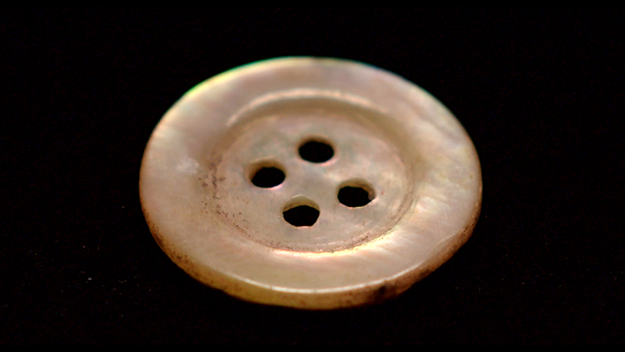
Late in the film, you introduce that re-enactment with the weighted steel and disposed bodies, which is simultaneously extremely disturbing in terms of subject matter and quite compelling formally. Were you really trying to understand how those murders happened, as you say in the voiceover?
It did help me understand better. The writer who is in the film wrote a very large book on how they disposed of these bodies, so I proposed to him, why don’t we just put a body on the table while you explain how it was done? Then the helicopter flying over the ocean and throwing the body—it’s not a real helicopter, we built that helicopter because the military would never let us do that.
What do you mean you built the helicopter?
We used a real helicopter, but not a military helicopter, so the postproduction person superimposed a military helicopter that followed the same trajectory. The same person painted the bodies that fall, and the result is perfect.
It’s incredibly powerful.
If [it weren’t powerful], we wouldn’t have been able to use it.
I’m interested in what you say in the film and what you say again now—here’s this thing that you can’t quite grasp and so you created a scene to help you understand it. That sounds like what can motivate making a film in general.
No, I could picture perfectly the way they killed the people, and so many others that they killed in different other ways.
But there’s clearly something important about visualizing these things for you.
It’s a way of expressing what I was feeling. I had the desire to show, step by step, how it was done. How they took the bodies, wrapped them, tie the rail to the bodies, then place them in plastic bags and then into potato sacks, then take them away in the helicopter, and the helicopter pilot [from the Pinochet era] confirmed that that’s exactly the way they’d do it.
The way that you structure this film is that we mostly hear voiceover for the first part of the film. It’s only later that we realize there will be interviews, and that there will be vérité footage. And that realization is a bit unsettling, because you’d seduced us a bit with the voiceover—it’s almost the feeling of wearing headphones, of somebody talking directly to you.
I would have liked to have extended that. It becomes sort of a mysterious monologue. But the film never arrives if you do it that way, so we shortened it. You could make a movie with just a voiceover, but in this case I wanted to tell other stories, with the characters, because they are fundamental.
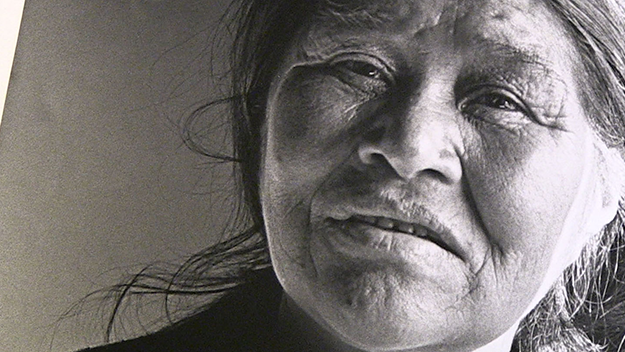
I found it quite powerful when things took that turn. At first there’s this voice in our ear taking us on a journey, but then other people start telling us their own stories, they make the film their own.
I had the same experience. It depends on the structural line of the film—whether it’s a line or a curve. It’s like a bridge, and there aren’t any laws. You’re watching it and you say, “This is where somebody has to speak,” and sometimes you say, “Just leave the voiceover.” So when I talk about the exoplanet that contains water, you have to come in and explain it, because otherwise nobody would understand—because it’s a made-up story. There are real stories and there are fantasy stories.
And there’s a different way of going about telling each story.
Exactly, and that’s the good thing. That way the film has variety.
Other filmmakers might work against that variety, to make it more overtly cohesive.
It’s true. I’m very classical with my approach.
Why do you say classical?
My stories are very traditional stories. The dramatic plane is very normal—there’s beginning, middle, and end.
I don’t know if I agree. I wouldn’t call your storytelling traditional at all.
[Smiles] Perhaps. Perhaps.



